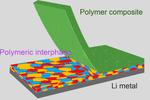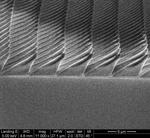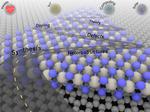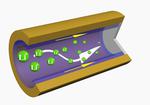Other

“Rechargeable lithium metal batteries with increased energy density, performance, and safety may be possible with a newly-developed, solid-electrolyte interphase (SEI), according to Penn State researchers. As the demand for higher-energy-density lithium metal batteries increases — for electric vehicles, smartphones, and drones …

“A new type of light-emitting diode lightbulb could one day light homes and reduce power bills, according to Penn State researchers who suggest that LEDs made with firefly-mimicking structures could improve efficiency. “LED lightbulbs play a key role in clean …

“Understanding the behavior of composite materials is important to advancing their design, since attempts to further strengthen or stiffen them can sometimes produce counterproductive results. A $545,000 grant over three years from the National Science Foundation (NSF) aims to …

“The rapid growth of research on 2D materials – materials such as graphene and others that are a single or few atoms thick – is fueled by the hope of developing better performing sensors for health and environment, more economical solar energy …

“An undesirable trait found in traditionally processed superalloys does not exist in a 3D-printed, nickel-based superalloy, according to a team of materials scientists who think this could lead to new manufacturing techniques that allow for alloys with tailored properties. The …

“A team of materials scientists from Penn State, Cornell and Argonne National Laboratory have, for the first time, visualized the 3D atomic and electron density structure of the most complex perovskite crystal structure system decoded to date. Perovskites are minerals …

“When it comes to recording and modulating neurons in the brain, neuroscientists face two options: noninvasive tools with low spatiotemporal resolution, or implantable tools that are highly invasive and can only record or impact a small percentage of the brain …

“Dramatically longer-lasting, faster-charging and safer lithium metal batteries may be possible, according to Penn State research, recently published in Nature Energy. The researchers developed a three-dimensional, cross-linked polymer sponge that attaches to the metal plating of a battery anode. “This …

“Reduced entropy in a three-dimensional lattice of super-cooled, laser-trapped atoms could help speed progress toward creating quantum computers. A team of researchers at Penn State can rearrange a randomly distributed array of atoms into neatly organized blocks, thus performing the …

“A wearable energy-harvesting device could generate energy from the swing of an arm while walking or jogging, according to a team of researchers from Penn State’s Materials Research Institute and the University of Utah. The device, about the size …
